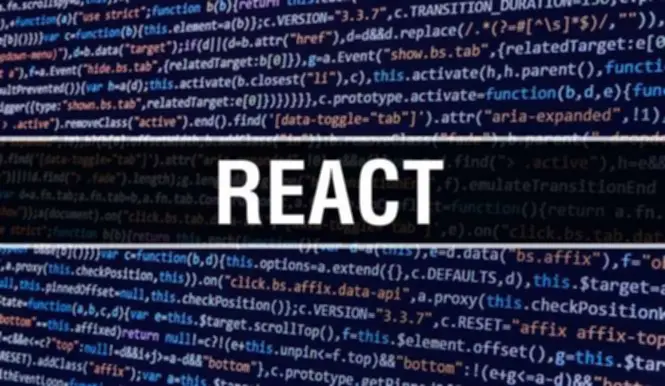What’s Ai Bias? Virtually Every Thing You Want To Find Out About Bias In Ai Results
For AI techniques utilized in customer support, similar to chatbots or automated response systems, bias could be identified by analyzing response quality and time throughout different buyer segments. If clients from certain areas, talking different languages, or with different spending histories consistently obtain subpar service, this might indicate an information or algorithmic bias. Algorithmic BiasAn AI software designed for diagnosing skin circumstances could be programmed with an algorithm that is more correct for lighter skin tones.
Algorithmic bias can also manifest when AI fashions reinforce existing societal inequalities. For instance, if a mortgage approval system depends on historic banking information that displays discriminatory lending practices, the AI may proceed to deny loans to marginalized communities, even if those individuals are financially certified. The first thing pc scientists do once they create a deep-learning mannequin is resolve what they actually need it to realize. A credit card company, for example, would possibly wish to predict a customer’s creditworthiness, however “creditworthiness” is a somewhat nebulous idea. In order to translate it into something that may be computed, the corporate must determine whether or not it desires to, say, maximize its revenue margins or maximize the variety of loans that get repaid. The downside is that “those selections are made for varied enterprise causes aside from fairness or discrimination,” explains Solon Barocas, an assistant professor at Cornell University who makes a speciality of equity in machine learning.
Learn extra about how bias occurs and what steps you can take to stop bias in your AI models. In Accordance to Bogdan Sergiienko, Chief Expertise Officer at Grasp of Code World, AI bias occurs when AI systems produce biased outcomes that mirror societal biases, similar to these associated to gender, race, tradition, or politics. Educate and Raise AwarenessAwareness and schooling are highly effective instruments within the fight towards AI bias.
With the rising use of AI in sensitive areas, including finances, criminal justice, and healthcare, we should strive to develop algorithms which may be honest to everyone. When you use AI in customer service, you’ll have the ability to have a glance at customer satisfaction scores as indications of bias. When individuals from a sure area consistently obtain poor support no matter their spending habits and product preferences, it is a pointer to proximity bias.
Though these biases are sometimes unintentional, the implications of their presence in ML techniques could be important. Relying on how the ML systems are used, such biases might result in unhealthy customer service experiences, decreased sales and revenue, unfair or possibly unlawful actions, and probably harmful conditions. LLMOps instruments (Large Language Model Operations) platforms give attention to managing generative AI fashions, guaranteeing they don’t perpetuate confirmation bias or out group homogeneity bias. These platforms embrace tools for bias mitigation, sustaining moral oversight in the deployment of large language models. The algorithm was designed to predict which patients would doubtless want further medical care, nonetheless, then it is revealed that the algorithm was producing defective outcomes that favor white patients over black patients. Fixing the issue of bias in synthetic intelligence requires collaboration between tech trade players, policymakers, and social scientists.
The Holistic AI Governance Platform might help your group detect and mitigate AI bias, ensuring https://www.globalcloudteam.com/ that your techniques are clear, dependable, and compliant with emerging AI regulations. If you can clean your training dataset from acutely aware and unconscious assumptions on race, gender, or other ideological concepts, you’ll find a way to build an AI system that makes unbiased data-driven choices. Ageism in AI includes the marginalization of older people or the perpetuation of stereotypes about age.
What Is Bias In Ai?
It affects the quality and fairness of decision-making and disproportionately impacts marginalized teams, reinforcing stereotypes and social divides. These variations make AI bias each extra harmful and harder to manage, highlighting the need for sturdy AI governance frameworks, transparency, and steady monitoring to mitigate risks before they escalate. This article explores what AI bias is, how it in ai what does bias do manifests, and why addressing it’s important to make sure equity, belief, and compliance with emerging rules. The term algorithmic bias was first outlined by Trishan Panch and Heather Mattie in a program at the Harvard T.H. Chan College of Public Health. ML bias has been a recognized threat for decades, yet it remains a posh drawback that has been troublesome to counteract.
The Path ForwardThe journey towards unbiased AI is ongoing and requires concerted effort and commitment. It is a path that includes technical savvy, moral consideration, and a deep understanding of the various world we reside in. As leaders in enterprise and know-how, you have a singular alternative and duty to form the way ahead for AI.
This Is How Ai Bias Actually Happens—and Why It’s So Onerous To Repair
- Machine learning bias, also identified as algorithm bias or AI bias, is a phenomenon that happens when an algorithm produces outcomes which would possibly be systemically prejudiced because of faulty assumptions within the machine learning (ML) process.
- The mannequin could nonetheless produce prejudiced outcomes counting on associated non-protected components, for example, geographic data—the phenomenon often recognized as proxy discrimination.
- “Is it a good or unhealthy factor that the AI you select as a end result of it represents your values solely tells you belongings you already believe?
- Since people are responsible for creating both the biased data and the algorithms used to determine and take away biases, achieving full objectivity in AI systems is a difficult aim.
- Then there are ideological biases that mirror dominant political viewpoints, and temporal biases that anchor fashions to outdated information.
- Feeding diverse datasets into AI training fashions after which constantly auditing the data helps to mitigate bias.
When this happens, the output of the algorithm may be biased in that the mannequin failed to contemplate different elements in the knowledge which may be of extra importance. Equally, AI-generated images could exaggerate features or misrepresent individuals from marginalized communities due to an absence of diverse and balanced coaching samples. This bias not solely skews representation however also can perpetuate harmful narratives, affecting industries corresponding to marketing, media, and design, the place accurate and inclusive imagery is essential. Successfully figuring out and mitigating bias in AI begins with AI governance, the structured strategy to overseeing, managing, and monitoring an organization’s AI initiatives. AI governance establishes a framework of insurance policies, finest practices, and moral tips to ensure AI applied sciences are developed and deployed responsibly.
Since knowledge on tech platforms is later used to coach machine learning models, these biases result in biased machine studying models. Shifting what kinds of knowledge healthcare professionals pay consideration to is the focus of one other study led by Yale researchers. The group notes that race and ethnicity may not be efficient for coaching predictive medical algorithms, suggesting that algorithms alternatively be trained on variables like genetic variation and social class. Altering these practices may help root out long-standing biases in healthcare that unfair algorithms proceed to uphold. When utilizing AI to automate customer service tasks or help human brokers, even the smallest of biases in data can lead to low-quality experiences. For instance, speech recognition instruments may wrestle to grasp completely different accents and dialects, leading to irritating customer experiences.


Leaders must invest in coaching and growth packages that emphasize the significance of equity and the dangers of AI bias. By educating AI developers, users, and the broader neighborhood, we will collectively contribute to creating AI methods that aren’t only technologically superior but in addition socially accountable. Whereas human bias can sometimes be detected and corrected over time, AI methods can process vast amounts of data and make thousands of selections in seconds. This means biased outcomes can shortly and invisibly affect giant populations, magnifying dangers and impacts throughout multiple sectors. If these biases aren’t corrected during the training process, AI systems will replicate and potentially amplify these biases of their decision-making. AI bias is an anomaly within the output of machine studying algorithms, as a end result of prejudiced assumptions made in the course of the algorithm development course of or prejudices within the coaching data.
By setting clear tips and conducting regular audits, organizations can stop biased outcomes, reduce threat, and ensure compliance with world regulations like the EU AI Act, whereas building belief with stakeholders. Addressing AI bias isn’t just an ethical imperative—it is important for sustaining equity, trust, and accuracy in AI-driven decisions. Furthermore, as AI techniques become integral to crucial business functions, unchecked bias poses a big operational threat, affecting customer relations, compliance, and enterprise performance. Ableism in AI happens when techniques favor able-bodied perspectives or don’t accommodate disabilities, excluding individuals with impairments.
This isn’t true just in computer science—this query has a protracted historical past of debate in philosophy, social science, and legislation. What’s completely different about computer science is that the concept of equity needs to be defined in mathematical phrases, like balancing the false constructive and false adverse rates of a prediction system. However as researchers have found, there are numerous totally different mathematical definitions of fairness which would possibly be also mutually exclusive.
Even if the info is unbiased, the means in which data is processed can lead to discrimination. Regulation can play an important position in addressing and mitigating AI bias by establishing pointers and requirements that guarantee equity and accountability. There are already many legal guidelines on the books protecting folks from wrongful discrimination in areas like banking, housing and hiring (and several companies have been punished for violating those legal guidelines with AI). Models then study to not put an extreme quantity of weight on a protected attribute, resulting in extra goal decision-making. AI fashions for predicting credit score scores have been shown to be less correct for low-income people.

That time when a natural language processing model liable for content material mediation censored feedback mentioning disabilities as “inappropriate,” depriving individuals with disabilities of the best to state their opinion. Or when an AI-based mortgage approval device decided to charge black and Latino borrowers larger pursuits than their white counterparts. Human biases are handed into AI methods by way of subjective selections within the labeling of knowledge and development of models. Thus, builders own bias may affect the greatest way they interpret data and design algorithms. When such datasets include historic biases or are unrepresentative of the larger inhabitants Front-end web development, it could possibly cause AI will doubtless mirror to these biases in selections.

Leave a Comment
You must be logged in to post a comment.